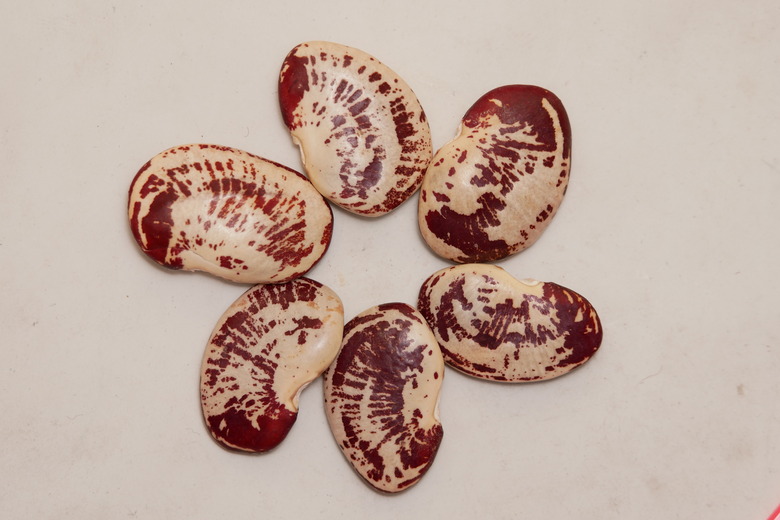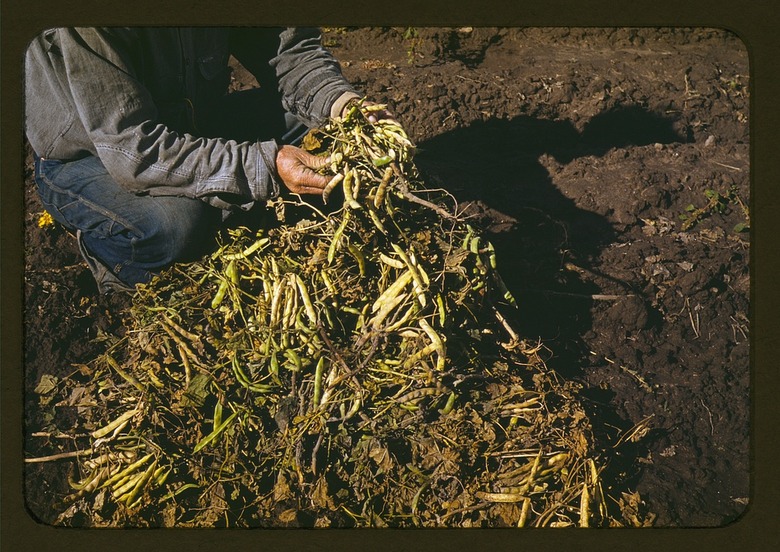How To Grow, Harvest And Store Pinto Beans
Pinto beans (Phaseolus vulgaris) are a type of bean that get their name from the specks on their surface. Common in Mexican dishes like refried beans, as well as soups, pinto beans can be harvested fresh to be consumed right away or frozen, or harvested when dry for long-term storage.
Growing Pinto Beans
Like many bean varieties, **pinto beans are easy legumes for home gardeners to grow**—legumes are plants that have a special relationship with certain bacteria that allows them to turn nitrogen from the air into a form the plants can use. When growing beans from seed, germination usually takes seven to 10 days.
Wait until soil temperatures have reached 60°F to sow pinto bean seeds or transplant seedlings into the garden. If you want a continuous supply of beans during the growing season, repeat this process every two or three weeks until the middle of July.
Situate pinto bean plants in full sun in the garden and keep the soil moist, especially when the plant is flowering and pods begin to form. Black plastic mulch can help conserve moisture and help the soil warm up in the spring. Do not overwater pinto bean plants, which can cause root rot and other fungal diseases.
Harvesting Pinto Beans
**It takes about 90 days for pinto beans to be mature enough to be harvested.** Pinto beans can be harvested fresh or dry.
Tip
Pinto beans can be harvested fresh to be consumed immediately.
Fresh Pinto Beans
Harvest pinto beans fresh to be shelled and eaten right away. In this case, you'll want to harvest the beans when the pods are plump and still green.
The pod should be thin and have a tough texture at this stage, but should not be dry. The beans should be full-sized but soft to the touch.
Dried Pinto Beans
If you want to harvest dry pinto beans from your garden, like those you find at the grocery store, wait until the pods have dried out completely.
You'll know the beans inside the pod are dry when they make a rattling sound when shaken. The dry pods eventually shatter, scattering beans anywhere, so you don't want to leave them on the plant for too long.
If the beans are not completely dry when you shell the bean pods, you will need to allow them to completely dry in the sun or in an oven turned down very low. It is important for the beans to be free of moisture, which can lead to mold development.
Tip
To harvest dry beans, wait until the pods turn yellow and make a rattling sound when shaken.
Storing Pinto Beans
If you are not ready to use fresh beans right away, you can keep them in the refrigerator for a few days or freeze them. Prior to freezing, you will need to shell and wash the beans. And, like all vegetables, **pinto beans need to be blanched before freezing, which involves soaking them in boiling water.**
How long you soak fresh pinto beans prior to freezing will depend on the size of the beans you harvested. Blanch small beans for two minutes, medium-sized beans for three minutes and large beans for four minutes.
Dry beans, on the other hand, should be stored in airtight containers in a cool, dry place.

